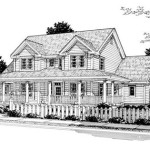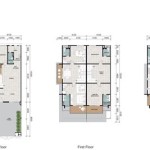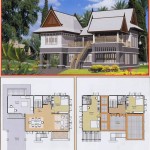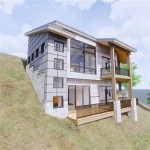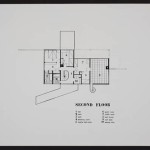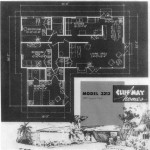House Plan For 700 Sq Ft North Facing Home
Designing a functional and comfortable home within a 700 sq ft footprint, particularly one that is north-facing, requires careful planning and consideration of various factors. North-facing homes in many regions receive less direct sunlight than homes facing other directions. This can impact natural lighting, heating, and overall energy efficiency. Optimizing the layout to maximize available light and create a comfortable living environment is crucial.
This article will explore key considerations and potential design strategies for developing a successful house plan for a 700 sq ft north-facing home. The focus will be on space optimization, natural light utilization, ventilation, and creating a comfortable and aesthetically pleasing living space despite the limitations of size and orientation.
Maximizing Natural Light and Ventilation
One of the primary challenges with a north-facing home is the reduced amount of direct sunlight. To counteract this, the design should prioritize large windows and strategically placed openings to capture as much diffused natural light as possible. Consider incorporating skylights or clerestory windows, especially in rooms that are typically used during the day, such as the living area and kitchen. These can bring in overhead light, significantly brightening the space.
Window placement should also consider prevailing wind directions to optimize natural ventilation. Cross-ventilation is essential for maintaining a comfortable indoor climate and reducing the need for artificial cooling. Strategically placing windows on opposing walls can create airflow, especially important in smaller spaces where stagnant air can be an issue. Using window types that allow for adjustable ventilation, such as awning or casement windows, can further enhance control over airflow.
Light-colored interior finishes, such as white or pastel walls and ceilings, can help reflect and distribute natural light throughout the home. Avoiding dark colors will prevent the space from feeling gloomy and enclosed. Mirrors can be used strategically to bounce light and create the illusion of more space. Consider placing mirrors near windows or in hallways to amplify the available light.
The landscaping around the north-facing side of the home should be carefully considered. Avoid planting tall trees or shrubs that could further block sunlight. Instead, opt for low-growing plants or ground cover that allows light to reach the windows. Deciduous trees, which lose their leaves in the winter, can be a good option as they provide shade in the summer and allow sunlight to penetrate in the winter.
Optimizing Space and Functionality
In a 700 sq ft home, every square foot counts. The layout should be carefully planned to maximize functionality and minimize wasted space. Open-concept living areas can create a sense of spaciousness and allow for flexible use of the available area. Combining the living room, dining area, and kitchen into one open space can make the home feel larger and more inviting.
Multifunctional furniture is essential for maximizing space in a small home. Consider using a sofa bed in the living room to provide an extra sleeping space for guests. A dining table that can be folded or extended can be used for both small meals and larger gatherings. Ottomans with storage compartments can provide seating and storage in one unit.
Built-in storage solutions can help to keep the home organized and clutter-free. Consider incorporating built-in shelves, cabinets, and drawers throughout the home. This can free up floor space and provide ample storage for belongings. Vertical storage, such as tall bookshelves or cabinets, can also help to maximize space and draw the eye upwards, making the room feel taller.
The kitchen should be designed with efficiency in mind. Consider using compact appliances, such as a smaller refrigerator or a combination microwave/oven. Wall-mounted cabinets can provide extra storage space without taking up valuable counter space. A breakfast bar or island can provide additional counter space and seating.
The bathroom should be designed to be functional and efficient. Consider using a corner shower or a wall-mounted sink to save space. A combination toilet/bidet can also save space and provide added functionality. Ample storage is important in the bathroom, so consider incorporating shelves or cabinets above the toilet or sink.
Creating a Comfortable and Aesthetically Pleasing Environment
While functionality is paramount, the aesthetic appeal of the home is also important. Choosing a cohesive design style can help to create a sense of harmony and make the small space feel more inviting. Simple and minimalist designs often work well in small homes, as they avoid unnecessary clutter and create a clean and uncluttered look.
The use of color can also impact the perceived size and feel of the home. Light colors can make a room feel larger and brighter, while dark colors can make it feel smaller and more enclosed. Using a consistent color palette throughout the home can create a sense of flow and continuity.
Adding personal touches, such as artwork, plants, and decorative items, can help to make the home feel more personal and inviting. However, it is important to avoid over-cluttering the space, as this can make it feel smaller and more cramped. Choose a few key pieces that you love and that reflect your personal style.
Outdoor living spaces can extend the usable area of the home and provide a place to relax and enjoy the outdoors. A small patio or deck can be a valuable addition to a 700 sq ft home, especially if it is located off the living area. Consider adding outdoor furniture, plants, and lighting to create a comfortable and inviting outdoor space.
Pay attention to the details. Small design choices can have a big impact on the overall feel of the home. Choose quality materials and finishes that will stand the test of time. Consider adding architectural details, such as crown molding or wainscoting, to add visual interest and character. Proper lighting is also essential for creating a comfortable and inviting atmosphere. Use a combination of ambient, task, and accent lighting to create a well-lit and functional space.
Consider the long-term needs of the occupants. Although the home may be designed for a single person or a couple, it is important to think about how the space could be adapted to accommodate future needs. For example, the living room could be designed to accommodate a home office or the spare bedroom could be designed to be easily converted into a child's room. Planning for the future can help to ensure that the home remains functional and comfortable for many years to come.

25 X 28 House Plan North Facing 2bhk 700 Sqft Small By Floor

20x35 North Facing 2bhk Ground Floor House Plan 700 Sqft Plot

25x28 North Facing Vaastu 2 Bedrooms 700 Sqft House Plan Makan Ka Naksha

700 Sqft 2bhk House Plan Ii North Face Design 30 X22 By 22 Ghar Ka Naksha

25 28 House Plan 700 Sqft Design Home No 173

700 Sq Ft N House Plans Fresh Vastu East Facing Charming Idea 1200 With Wonac Net

700 Sq Ft Duplex House Plans

House Plans For 700 Sq Ft In Usa

700 Sqft House Design Ii 25 X 28 Plan Ghar Ka Naksha

Small House Plan 22 31 2bhk North Facing

